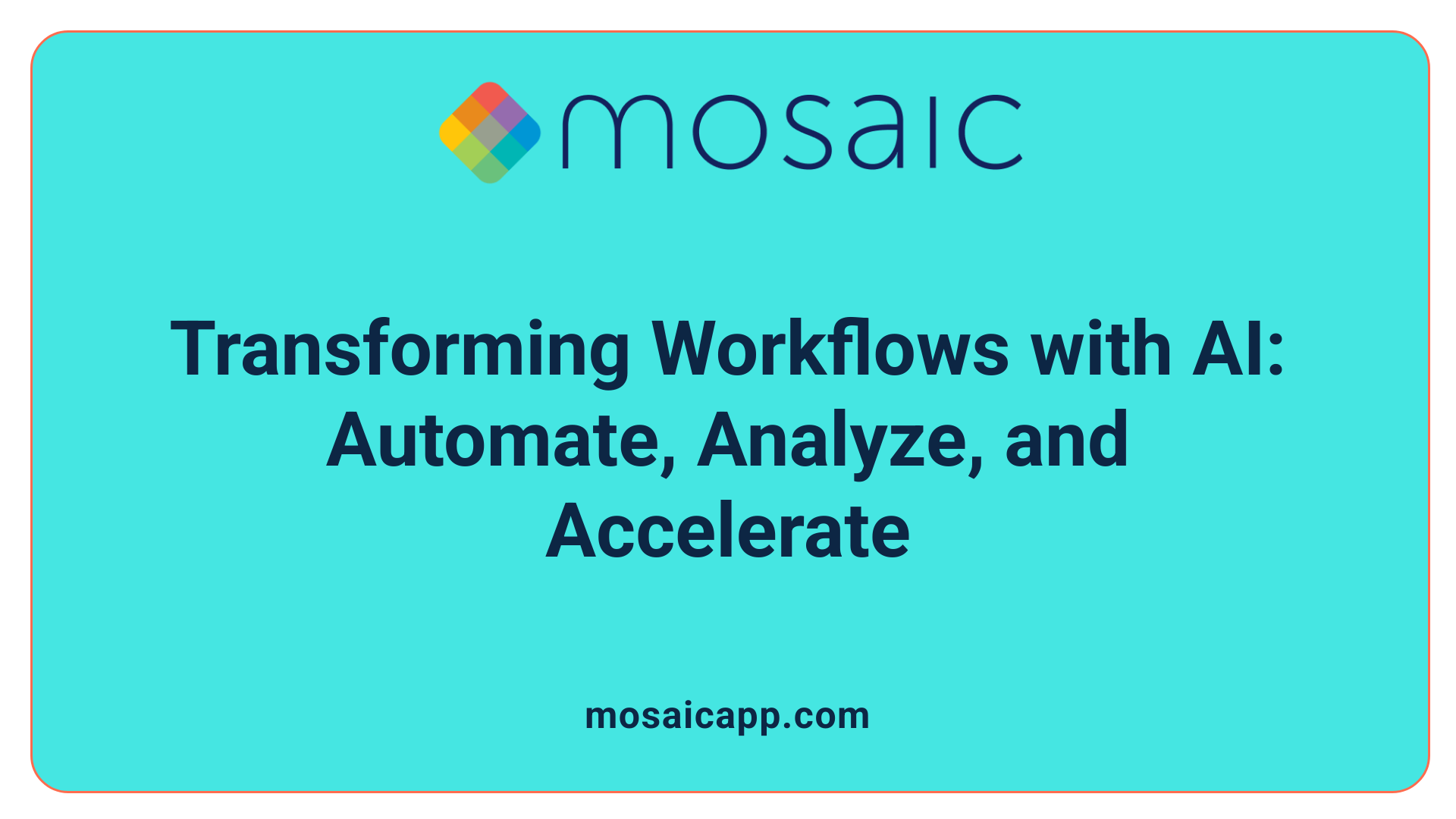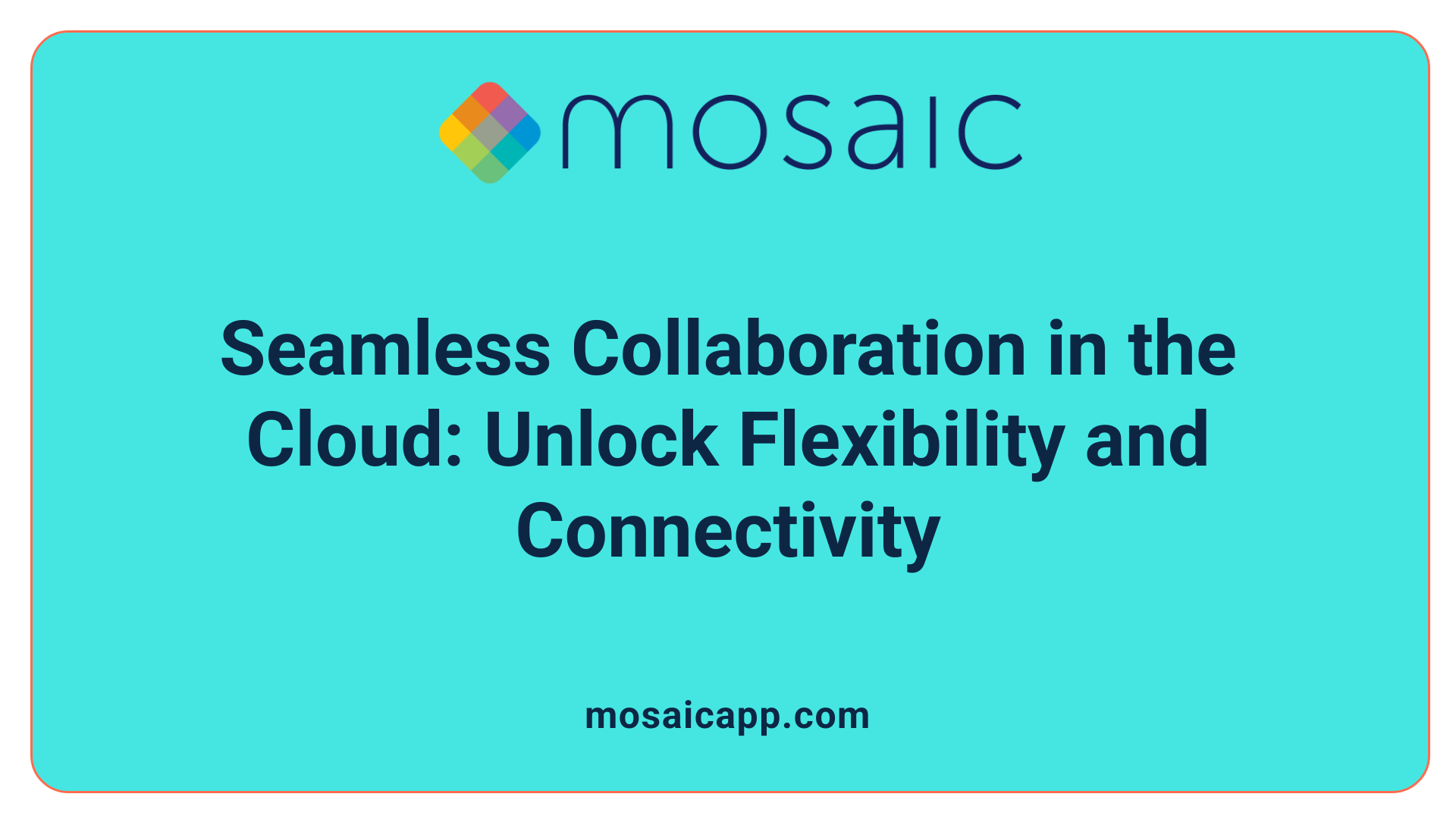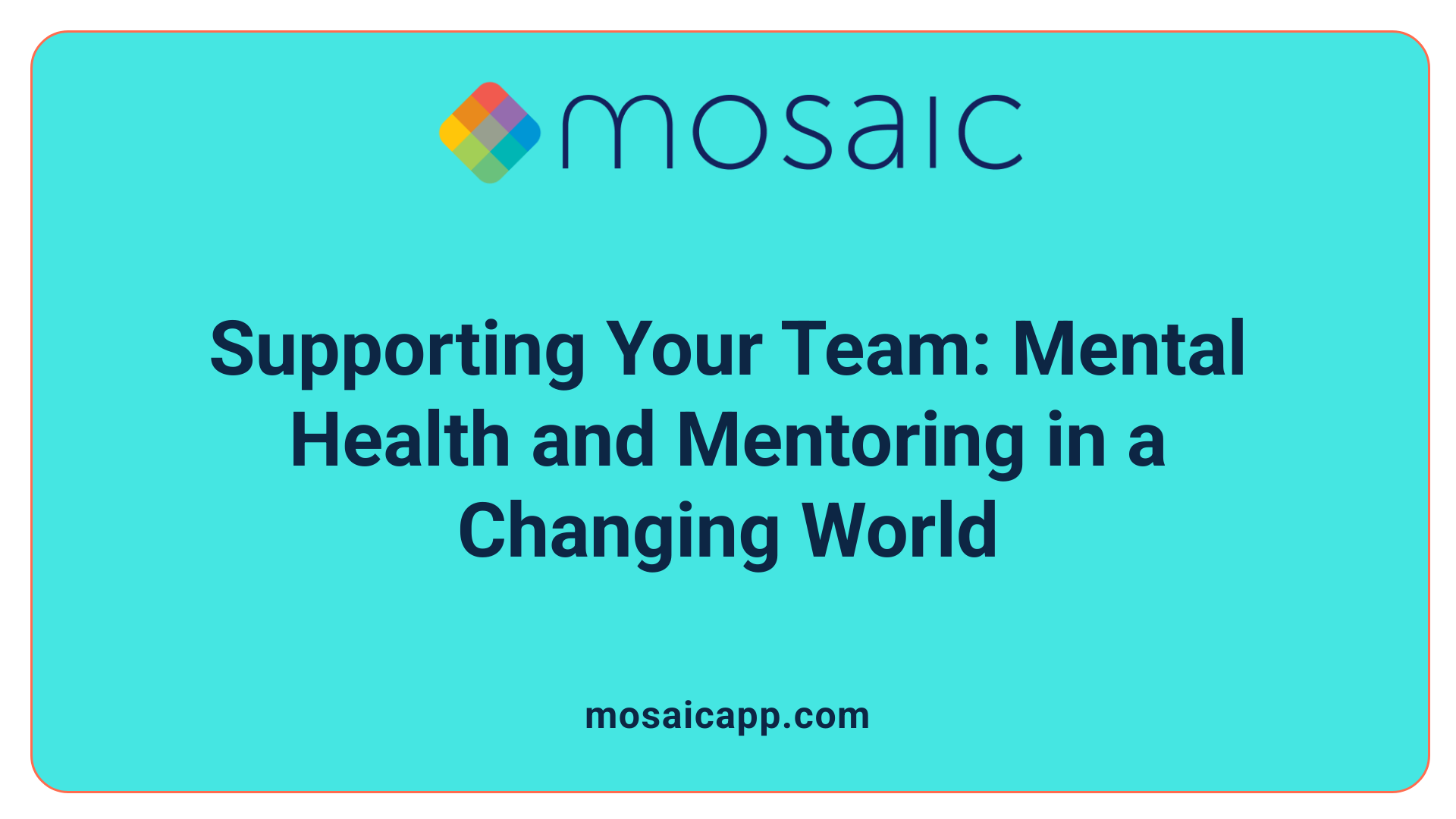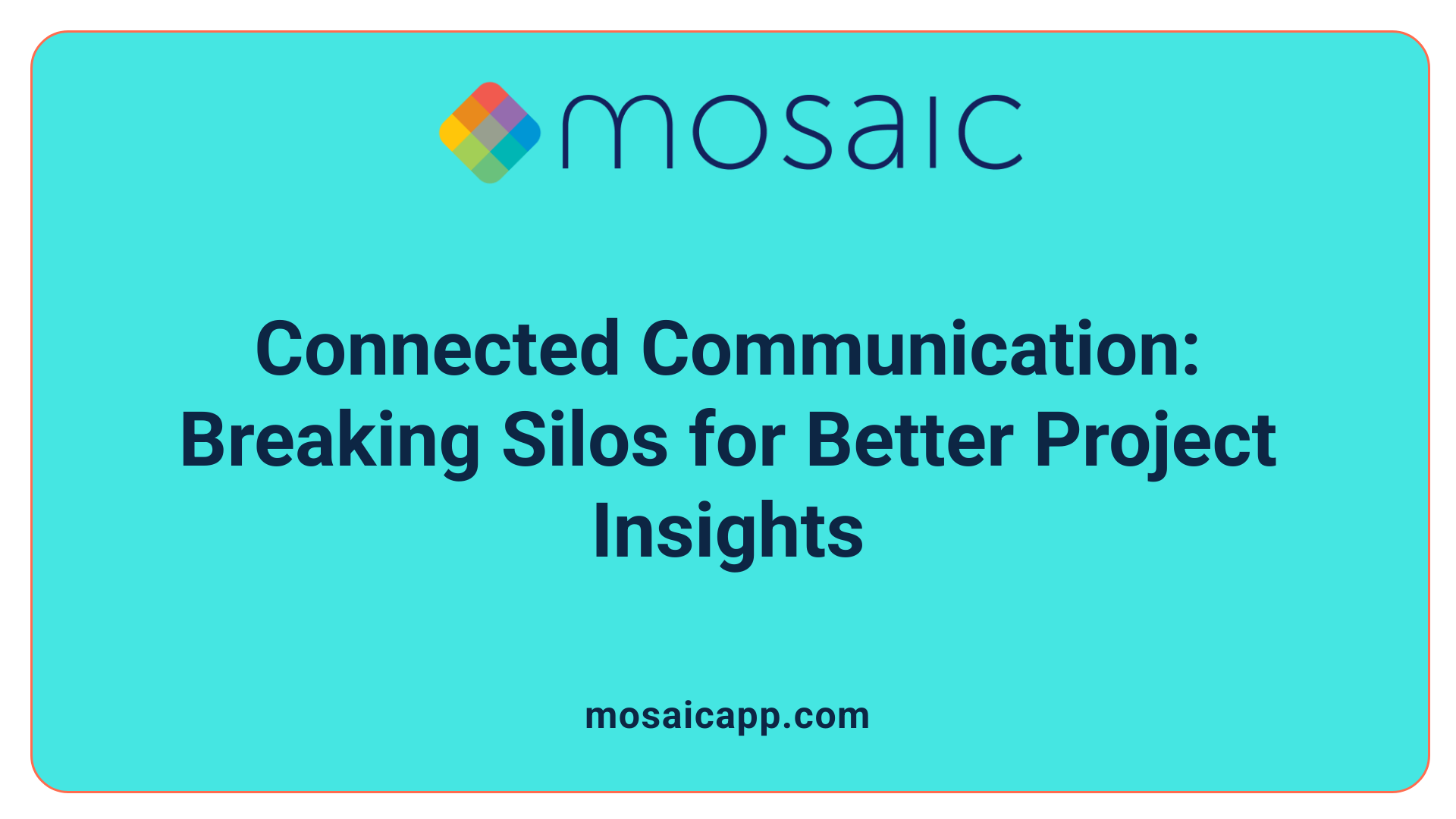Introduction to a New Era of Balanced Workloads
As we approach 2026, the landscape of project management is undergoing a profound transformation. Increasingly sophisticated technologies, evolving organizational strategies, and a heightened focus on employee well-being are converging to reshape how workloads are managed. This cultural shift toward balanced workloads is crucial to addressing the complexities and pressures faced by today's workforce, ensuring sustainability and productivity in an ever-changing work environment.
The Rise of Artificial Intelligence in Project Management

How is AI influencing project management workflows?
Artificial intelligence (AI) is rapidly transforming project management by automating routine tasks such as scheduling, budgeting, and status reporting. This automation frees project managers and team members to focus on more strategic and creative aspects of their work.
Beyond task automation, AI supports complex decision-making processes by analyzing large datasets and predicting project outcomes. This capability enhances risk management and resource allocation, making projects more efficient and adaptive.
Emerging AI-native workflows leverage intelligent algorithms to streamline project processes end-to-end. These workflows enable advanced predictive analytics and optimize decision-making in real-time, reshaping how projects are planned and executed.
With AI-driven automation and decision support tools becoming integral, project teams can anticipate challenges earlier, allocate resources more effectively, and improve overall project success rates. The integration of these AI capabilities marks a significant evolution in project management practices.
Cloud-Based Solutions Enhancing Collaboration and Flexibility

What role does cloud technology play in modern project management?
Cloud-based solutions have become a driving force in advancing project management (PM) by facilitating the adoption of automated data use within PM tools. This technology empowers teams to collaborate more easily across different locations and organizations. By hosting data and applications in the cloud, project participants gain flexible access to the latest project information, no matter their physical location.
Adoption of cloud-enabled PM tools
The widespread adoption of cloud-based project management tools allows organizations to automate routine tasks and integrate diverse functionalities. These tools support complex decision-making by providing real-time data and analytics that are accessible through web interfaces, reducing dependency on local hardware setups.
Benefits of easier collaboration and cross-company access
Cloud platforms promote seamless collaboration by connecting project members across departments and partner companies. This integration fosters knowledge sharing and ensures that all stakeholders maintain aligned objectives and up-to-date information.
Flexible deployment for diverse teams
Cloud solutions offer flexible deployment models that accommodate hybrid, remote, and on-site work environments. Organizations can easily scale resources and adapt workflows to fit diverse team structures and geographic distributions, empowering efficient and agile project execution.
Addressing Workforce Overstrain with Mental Health and Mentoring Support

Increasing project complexity and workload pressures
Project teams today face unprecedented challenges due to rising project complexity, rapidly evolving technologies, and heavier workloads. These pressures can lead to burnout and reduced productivity if not properly managed.
Importance of mental health initiatives
To combat these stresses, organizations are placing strong emphasis on mental health support. Initiatives may include access to counseling, stress management resources, and promoting a culture where discussing mental health is normalized and encouraged.
Mentoring and skills development as support mechanisms
Mentoring programs also play a crucial role in assisting employees by providing guidance, knowledge sharing, and emotional support. Additionally, targeted skills development helps employees adapt to new tools and workflows, reducing frustration.
How are organizations supporting employees facing workload overstrain?
Organizations are actively responding to these challenges by implementing comprehensive mental health support, establishing mentoring systems, and focusing on continuous skills development. These combined efforts help project participants manage their workload more effectively, build resilience, and sustain long-term performance.
Integrated Communication Tools Shaping Knowledge Sharing

How does integrated communication affect project management?
The integration of communication tools such as Microsoft Teams directly into project plans is transforming how teams collaborate and manage projects. This integration allows real-time knowledge sharing among project participants, breaking down silos and improving overall communication flow. It ensures that vital information is instantly accessible, supporting faster decision-making and more effective coordination.
Moreover, such tools enhance project documentation by providing centralized platforms where all communications, files, and updates can be stored and tracked. This leads to more comprehensive and organized project records. Capturing lessons learned becomes a natural part of the workflow, as communication threads can be reviewed and refined into actionable insights for future projects.
By improving the information flow and knowledge exchange, integrated communication tools reduce confusion and help balance workloads. Teams can anticipate challenges earlier and allocate resources accordingly, fostering a healthier project environment and mitigating overstrain.
In summary, embedded communication tools reshape project management by facilitating connection, documentation, and reflection—key elements for productive and sustainable projects.
Evolving Project Planning Under Increasing Complexity

What planning changes have emerged due to project complexity?
Project complexity has driven notable shifts in the way projects are planned and managed. One major adjustment is the adoption of hybrid project methodologies. These approaches combine traditional and agile practices, allowing teams to tailor their workflows according to the nature of the project tasks. This flexibility helps in handling diverse challenges and delivering results more effectively.
Another important change is the use of multi-level scheduling techniques. Rather than relying on a single, rigid timeline, project managers now create schedules that operate on multiple layers. This enables better coordination between high-level strategic goals and detailed task execution, ensuring alignment and facilitating adjustment in response to evolving project needs.
Lastly, increasing attention is given to environmental, social, and governance (ESG) factors. Incorporating ESG considerations into project planning reflects a broader commitment to sustainability and ethical practices. Projects now account for their environmental impact, social responsibility, and governance implications, which helps organizations align with stakeholder expectations and regulatory requirements.
Together, these planning changes help manage complexity more effectively, allowing for balanced workload distribution and more agile responses to emerging challenges across all project levels.
Change Management and Transparency as Pillars of Success
Why are change management and transparency critical in managing workloads?
Change management and transparency are essential for effectively managing workloads in complex projects. They ensure that all stakeholders are engaged early in the process, which helps in anticipating potential challenges and distributing tasks more evenly. Early involvement prevents bottlenecks and reduces the risk of overburdening individuals or teams.
Open communication strategies foster trust and clarity among project members. By maintaining transparent dialogue, project leaders can identify issues quickly and adjust workloads or resources accordingly. This openness minimizes misunderstandings and resistance to change, making transitions smoother.
Support structures for organizational change, such as mentoring programs and mental health resources, are vital. They provide employees with the necessary tools and confidence to adapt to new methods or technologies. This support mitigates stress caused by shifting responsibilities and technological advancements, ultimately enhancing overall productivity and project success.
Effective change management coupled with transparency cultivates an environment where workload challenges are visible and addressed collaboratively, ensuring a more balanced and resilient project team.
The Growing Importance of Resource Planning
What challenges and solutions define resource planning today?
Resource planning has become increasingly complex due to the growing intricacy of projects and the diverse roles involved. Ensuring that all contributors—from core team members to supporting stakeholders—are accounted for requires comprehensive tracking systems that capture availability, skills, and workload.
To address these challenges, flexible, scenario-based planning tools are gaining traction. These tools enable project managers to simulate different resource allocation scenarios and adjust plans dynamically to maintain balance and respond to shifting project demands.
This adaptability is vital as projects often face unexpected changes that impact resources, such as shifts in priorities or unforeseen absences. By involving all relevant roles directly in the planning process, organizations can better predict resource needs and avoid bottlenecks.
Ultimately, effective resource planning today hinges on transparent tracking combined with planning solutions that support flexibility and collaboration across project teams.
Transformation of the PMO into a Strategic Function
How is the role of the PMO evolving in workload management?
The role of the Project Management Office (PMO) is shifting from traditional oversight to a more strategic function. This evolution involves an expanded focus on managing entire project portfolios rather than isolated projects. The PMO now oversees resource allocation across all projects to ensure optimal use of available assets.
A critical part of this strategic role is project prioritization. By carefully assessing the value and impact of ongoing and proposed projects, the PMO ensures that resources are dedicated to initiatives that align with organizational goals and deliver maximum benefit.
Additionally, the PMO actively practices the termination of weak or underperforming projects. This difficult but important decision helps avoid wasted effort and reallocates resources to projects with higher potential. As a result, this strategic approach enhances workload management, balancing demands and improving overall project success.
Through these responsibilities, the modern PMO serves as a central hub that supports better decision-making and more effective distribution of organizational resources, ultimately strengthening project outcomes and fostering sustainable growth.
AI Impact on Workforce and Job Structures
What shifts in workforce structure are prompted by AI?
Artificial intelligence is driving notable changes in workforce structures across industries. One significant impact is the reduction of roles in entry-level and middle management positions. These roles often involve repetitive decision-making and administrative tasks that AI systems can automate more efficiently.
Conversely, sectors such as healthcare, construction, and education are experiencing workforce growth. This expansion is due to AI's augmentation of human capabilities in these fields, requiring more professionals with specialized skills to manage complex interactions and human-centric responsibilities.
How does AI affect workforce planning and job design?
The shifts caused by AI necessitate thoughtful workforce planning. Organizations must balance downsizing in automation-prone roles with hiring and developing talent in growth sectors. This involves redesigning jobs to emphasize uniquely human skills like creativity, empathy, and leadership, which are less susceptible to automation.
Furthermore, companies are increasingly adopting AI-supported people management tools that enable evidence-based hiring, training, and retention decisions. These tools optimize workforce allocation by predicting skill demands and employee potential.
In summary, AI compels organizations to rethink job structures and workforce strategies, reducing certain roles while expanding others, and emphasizing human-centric capabilities to complement technology.
Human-Centric Skills as Key to Future Workforce Development
Which skills are gaining importance and why?
As artificial intelligence and automation become increasingly integrated into project management, the value of human-centric skills is rising sharply. Creativity, empathy, and leadership stand out as essential attributes for project managers and team members alike. These skills complement technological tools by addressing complex interpersonal dynamics, fostering innovation, and guiding teams through challenges that automated systems cannot fully manage.
Guiding training and development strategies
Organizations are reshaping training programs to balance technical proficiency with these human skills. Emphasizing creativity encourages innovative problem-solving, which machines cannot replicate. Empathy enhances communication and builds trust among project participants, which is crucial in hybrid and remote work settings. Leadership development focuses on motivating and mentoring teams, especially as workloads and complexity increase.
Balancing technical with human skills
While technical knowledge remains important for operating advanced tools such as AI-driven project management systems, human-centric skills ensure workforce resilience and effective collaboration. This balance aids in managing technological change and the mental health challenges faced by project workers. Ultimately, integrating creativity, empathy, and leadership into workforce development supports sustainable project success and a future-ready workforce.
Evidence-Based People Management with AI and Data Analytics
How do AI and Data Analytics Improve People Management?
Artificial intelligence (AI) and data analytics are transforming human resources (HR) by enabling evidence-based decision-making. Instead of relying solely on experience or intuition, HR managers now use data-driven insights to make informed choices about recruitment, workforce allocation, and employee development.
Use of AI for HR Decisions
AI tools analyze vast amounts of workforce data, including performance metrics, employee feedback, and skill levels, to identify trends and predict outcomes. This helps organizations in making better hiring decisions, matching candidates to roles more accurately, and planning for future talent needs.
Workforce Optimization Through Analytics
By applying scenario-based analytics, companies optimize workforce planning to address fluctuating project demands and avoid employee overstrain. AI-driven models assist in balancing workloads, identifying resource gaps, and reallocating personnel efficiently across physical and virtual environments.
Improved Talent Retention and Acquisition
AI also enhances the employee experience by personalizing career development and mentoring programs, which boosts employee engagement and retention. Additionally, data analytics track the entire employee journey, helping to refine onboarding and offboarding processes. This focus not only retains valuable talent but also attracts high-quality candidates by creating a supportive organizational culture.
In sum, integrating AI and data analytics in people management leads to smarter HR strategies that support better workforce performance and growth.
Fostering Employee Experience for Talent Retention
Focus on the Entire Employee Journey
Employee experience encompasses every stage of an individual's time within an organization—from onboarding to development, daily work life, and eventual transition. Organizations increasingly prioritize managing this full journey attentively. Tailoring support and development at each phase ensures employees feel valued and motivated.
Improvement in Talent Acquisition and Retention
Attention to employee experience directly improves the ability to attract new talent and retain existing team members. By cultivating an environment where employees are supported, heard, and able to grow, organizations reduce turnover risks and strengthen loyalty. This approach enhances employer reputation and makes recruiting more effective.
Link to Balanced Workload and Engagement
A positive employee experience is closely linked to maintaining a balanced workload and high engagement levels. When employees perceive their workload as fair and manageable, their engagement rises, contributing to sustainable productivity. Conversely, overstrain can erode satisfaction and lead to burnout, making experience management essential.
Why is Employee Experience Central to Workload Balance?
A strong employee experience improves retention and attraction of talent by addressing workload fairness and engagement, which supports sustainable workforce planning. Organizations that prioritize this balance foster healthier work environments that sustain long-term success and employee well-being.
The Concept of 'Soft Retirement' and Its Impact on Workforce Planning
What is soft retirement and how does it affect workforce balance?
Soft retirement refers to a flexible transition phase where experienced employees gradually reduce their working hours rather than leaving the workforce entirely. This often involves shifting into advisory or part-time roles instead of full retirement.
Adopting soft retirement helps organizations maintain institutional knowledge by keeping seasoned professionals involved. These employees can mentor newer staff, fostering knowledge transfer and supporting skills development within the team. This reduces the risk of critical knowledge loss when key employees retire abruptly.
Additionally, soft retirement eases workload pressures on senior staff by offering flexible schedules, which can improve mental health and well-being during the career transition.
For workforce planning, soft retirement introduces a valuable balance—it retains expertise while allowing the next generation of employees to develop under guidance. This strategic approach supports smoother organizational change and continuity in project management activities.
Overall, integrating soft retirement options into workforce strategies enhances mentorship, sustains knowledge flow, and optimizes resource allocation with a human-centric mindset.
Support for Hybrid and Remote Work Ecosystems
Connected workplace ecosystems
Modern workplaces are evolving into interconnected ecosystems that seamlessly blend hybrid and remote work formats. This connectivity allows team members to collaborate regardless of location, fostering continuity and engagement across project phases.
Tailored resource management for physical and virtual spaces
Managing resources in these ecosystems requires a flexible approach. Organizations customize resource allocation, considering the unique needs of both physical offices and digital platforms. This ensures that tools, time, and personnel are optimized for the respective environment.
Implications for workload distribution
To maintain balanced workloads, organizations implement strategies that promote equitable task distribution across hybrid teams. This involves leveraging AI-supported project management tools to monitor workloads and adjust assignments dynamically, preventing overstrain and bottlenecks.
How are hybrid and remote work environments managed for balanced workloads?
Organizations develop connected ecosystems that support both physical and virtual workplaces, tailoring resource management to ensure equitable workload distribution in hybrid settings. This approach enhances productivity while addressing challenges posed by differing work modes.
Balancing Technological Change and Workforce Capacity
What Challenges Arise from Rapid Technological Adoption?
The fast pace of technological change in project management brings significant challenges. Employees often face increased complexity and heavier workloads as AI and cloud-based tools automate routine tasks and require new skills. This rapid shift can lead to overstrain among project participants who must quickly adapt.
Why is Ongoing Skills Development Essential?
To manage these challenges, continuous skills development is crucial. Organizations invest in mentoring, training, and mental health support to help teams navigate evolving project management tools and methodologies. Developing human-centric skills such as creativity, empathy, and leadership complements technical abilities, enabling employees to thrive alongside AI advancements.
How is Employee Overstrain Avoided?
Balancing technology with workforce capacity involves more than just training. Companies emphasize supportive environments that include open communication, collaboration platforms like Microsoft Teams, and transparent change management. These efforts create a culture where employees feel equipped and valued, reducing stress and fostering sustainable productivity.
How is Technological Change Balanced with Workforce Capacity?
By providing continuous skills development and support mechanisms, organizations help employees adapt to new technologies without undue stress, enabling balanced workloads.
Leveraging Multi-Level Scheduling for Effective Workload Management
What role does multi-level scheduling play in workload balance?
Multi-level scheduling plays a crucial role in balancing workload by allowing project managers to organize tasks at various levels of detail, which helps systematically address both task complexity and resource availability. This method divides the project schedule into multiple layers, from high-level milestones to detailed daily activities, enabling a structured overview and more precise control over the allocation of resources.
Techniques in multi-level scheduling
Multi-level scheduling techniques involve breaking down projects into manageable portions across different scheduling horizons. For example, strategic planning focuses on long-term goals and resource commitment, tactical planning addresses assembling tasks within phases, and operational scheduling covers daily or weekly task assignments. Using hybrid methodologies enhances this approach by combining traditional and agile planning, adjusting schedules dynamically to meet changing project demands.
Balancing task complexity and resource availability
This scheduling structure helps balance complex tasks by aligning them with the most suitable resources and adjusting workloads to prevent employee overstrain. It supports scenario-based planning tools, which simulate various resource allocation scenarios to optimize efficiency and flexibility, ensuring that project participants are not overwhelmed, thereby supporting mental health and well-being.
Impact on project success and employee well-being
Effective multi-level scheduling contributes significantly to project success by promoting transparency, adaptability, and better communication among team members. It facilitates early detection of resource bottlenecks and allows for proactive adjustments, which improves project outcomes and enhances team morale. Additionally, by preventing overallocation, it supports employee well-being, reducing burnout and fostering a healthier work environment.
Mentorship as a Bridge Between Experience and Emerging Talent
Role of mentorship in improving skills
Mentorship plays a critical role in skill development within project teams. Experienced mentors share practical knowledge, best practices, and problem-solving techniques with emerging talent, accelerating their learning curve. This guidance helps newcomers navigate complex project environments confidently, fostering professional growth and competence.
Supporting mental health through guidance
Beyond skill transfer, mentorship offers vital emotional support. The stress from escalating project complexity and workloads can overwhelm participants; mentors provide reassurance and practical advice to manage pressures effectively. This supportive relationship helps protect mental well-being by reducing feelings of isolation and anxiety.
Creating resilient project teams
By combining skill enhancement with emotional support, mentorship builds more resilient teams. Emerging members feel prepared to assume their roles, relieving some pressure from senior staff. This shared responsibility encourages a balanced distribution of tasks and prevents burnout, ultimately leading to sustained project performance.
Mentorship contributes to balanced workloads by transferring experience and supporting mental health, enabling emerging talent to confidently handle responsibilities. This distribution fosters equitable workload sharing and strengthens the team's resilience to challenges.
Future-Oriented Portfolio Management and Project Prioritization
How does future-oriented portfolio management help achieve balanced workloads?
Future-oriented portfolio management transforms the Project Management Office (PMO) into a strategic powerhouse that oversees dynamic project evaluation and prioritization. By continuously assessing the portfolio in light of strategic goals and resource availability, the PMO ensures that only high-impact initiatives move forward while weaker or less relevant projects are terminated. This approach aligns workload distribution with organizational priorities, preventing resource overextension.
Dynamic portfolio evaluation
Dynamic portfolio evaluation involves regular re-assessment of projects using data-driven insights and strategic alignment criteria. This ongoing process helps organizations adapt to market changes, technological advances, and evolving ESG (environmental, social, governance) considerations. It allows for the real-time identification of projects that add value and supports agile decision-making for portfolio adjustments.
Prioritizing projects based on strategic and resource factors
Project prioritization considers multiple factors:
- Strategic alignment: Projects are evaluated for their contribution to organizational objectives and ESG commitments.
- Resource availability: Comprehensive resource planning informs which projects can be realistically executed given current staff and technological capacity.
- Risk and complexity: Projects are assessed for their complexity and potential to strain project participants, guiding decisions to balance workload.
Optimizing workload through project selection
By selecting projects that align with both strategic goals and resource realities, organizations can avoid overburdening team members and ensure mental health and skill development needs are met. This optimization enhances project success rates and supports sustainable work environments, a vital response to the rising complexity and workload challenges in project management.
This strategic, data-informed portfolio approach allows organizations to navigate increasing project complexity and workforce challenges effectively, maximizing impact while protecting employee well-being.
Towards Sustainable and Balanced Workloads in 2026
The cultural shift toward balanced workloads in 2026 embodies a fusion of technology, strategic management, and human-centric approaches. Advancements in AI, cloud technology, and data analytics are transforming project management into a more flexible and transparent discipline. At the same time, committed attention to mental health, mentorship, and employee experience ensures that workforce demands are met sustainably. Organizations embracing these trends are not only optimizing resource use but also fostering environments where employees flourish. As project complexity and work dynamics continue evolving, this balanced approach is vital to building resilient, efficient, and fulfilling workplaces for the future.

